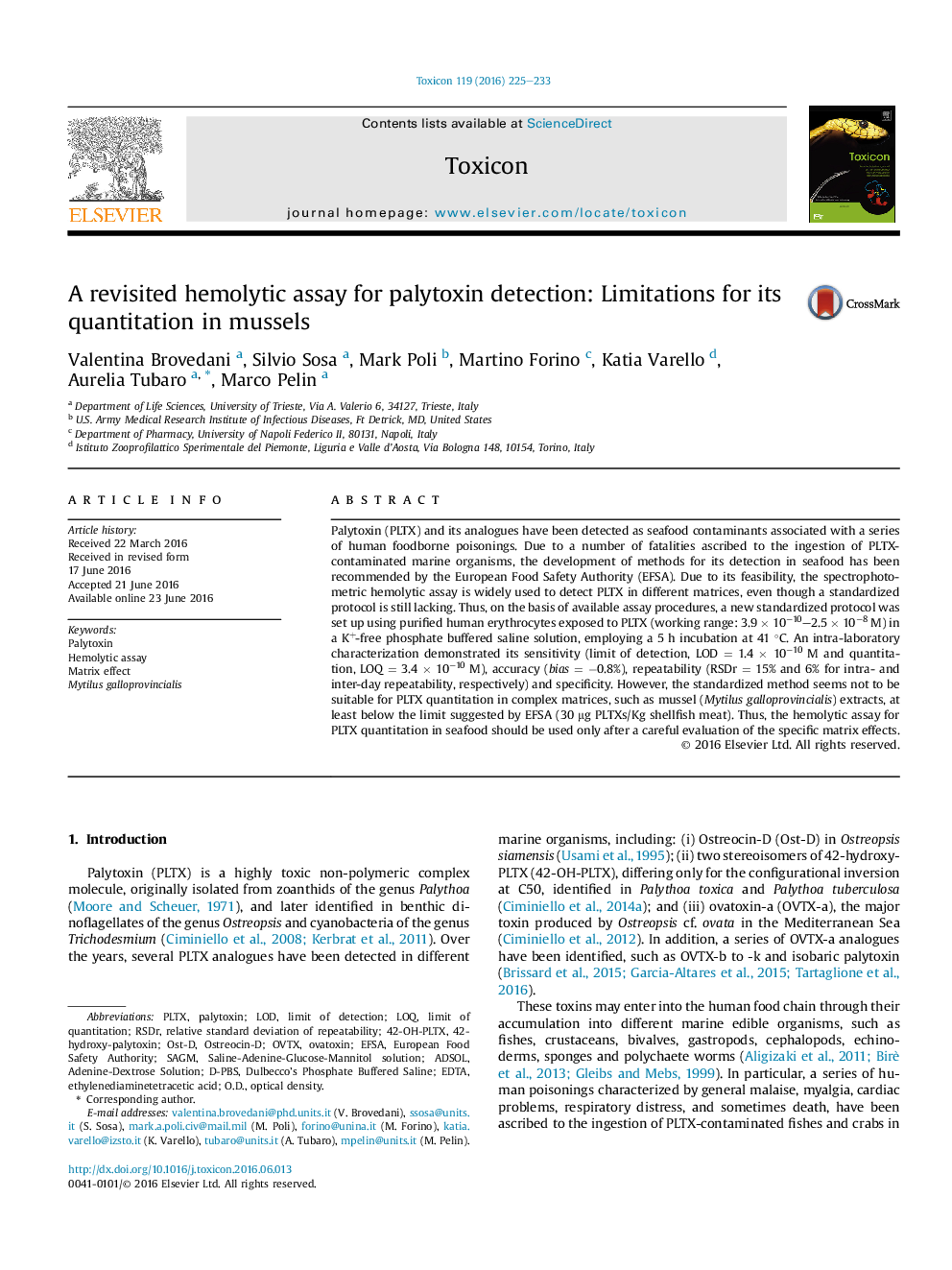| کد مقاله | کد نشریه | سال انتشار | مقاله انگلیسی | نسخه تمام متن |
|---|---|---|---|---|
| 2064011 | 1544117 | 2016 | 9 صفحه PDF | دانلود رایگان |
• The development of suitable palytoxin detection methods in seafood is recommended.
• The hemolytic assay was standardized using purified human erythrocytes.
• The intra-laboratory characterization demonstrated the sensitivity, accuracy, repeatability and specificity of the method.
• A significant matrix effect hinders the use of the hemolytic assay to quantify palytoxin in mussels.
Palytoxin (PLTX) and its analogues have been detected as seafood contaminants associated with a series of human foodborne poisonings. Due to a number of fatalities ascribed to the ingestion of PLTX-contaminated marine organisms, the development of methods for its detection in seafood has been recommended by the European Food Safety Authority (EFSA). Due to its feasibility, the spectrophotometric hemolytic assay is widely used to detect PLTX in different matrices, even though a standardized protocol is still lacking. Thus, on the basis of available assay procedures, a new standardized protocol was set up using purified human erythrocytes exposed to PLTX (working range: 3.9 × 10−10–2.5 × 10−8 M) in a K+-free phosphate buffered saline solution, employing a 5 h incubation at 41 °C. An intra-laboratory characterization demonstrated its sensitivity (limit of detection, LOD = 1.4 × 10−10 M and quantitation, LOQ = 3.4 × 10−10 M), accuracy (bias = −0.8%), repeatability (RSDr = 15% and 6% for intra- and inter-day repeatability, respectively) and specificity. However, the standardized method seems not to be suitable for PLTX quantitation in complex matrices, such as mussel (Mytilus galloprovincialis) extracts, at least below the limit suggested by EFSA (30 μg PLTXs/Kg shellfish meat). Thus, the hemolytic assay for PLTX quantitation in seafood should be used only after a careful evaluation of the specific matrix effects.
Journal: Toxicon - Volume 119, 1 September 2016, Pages 225–233
